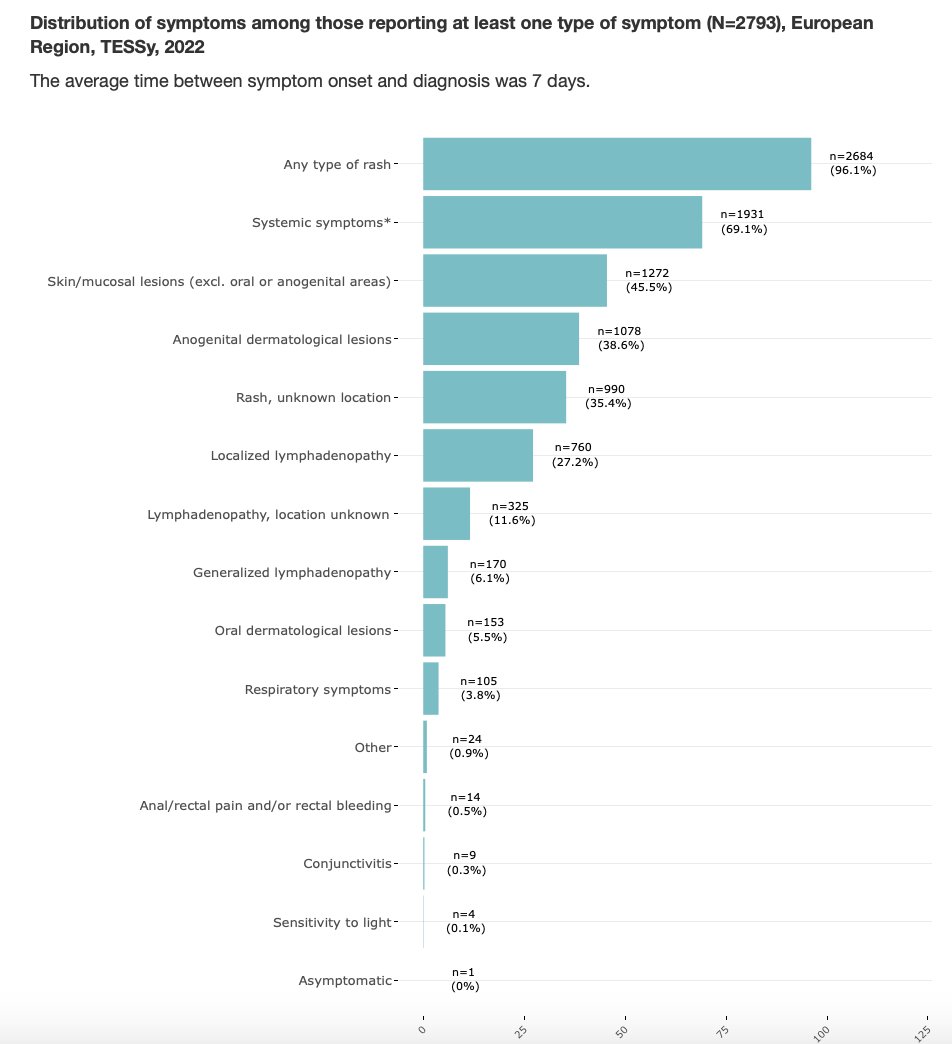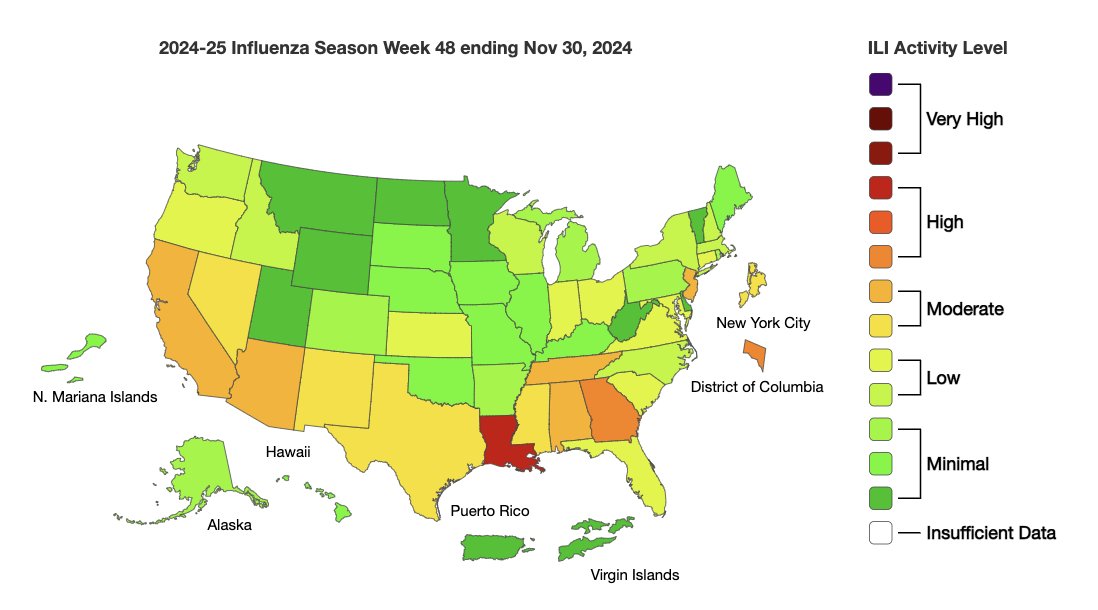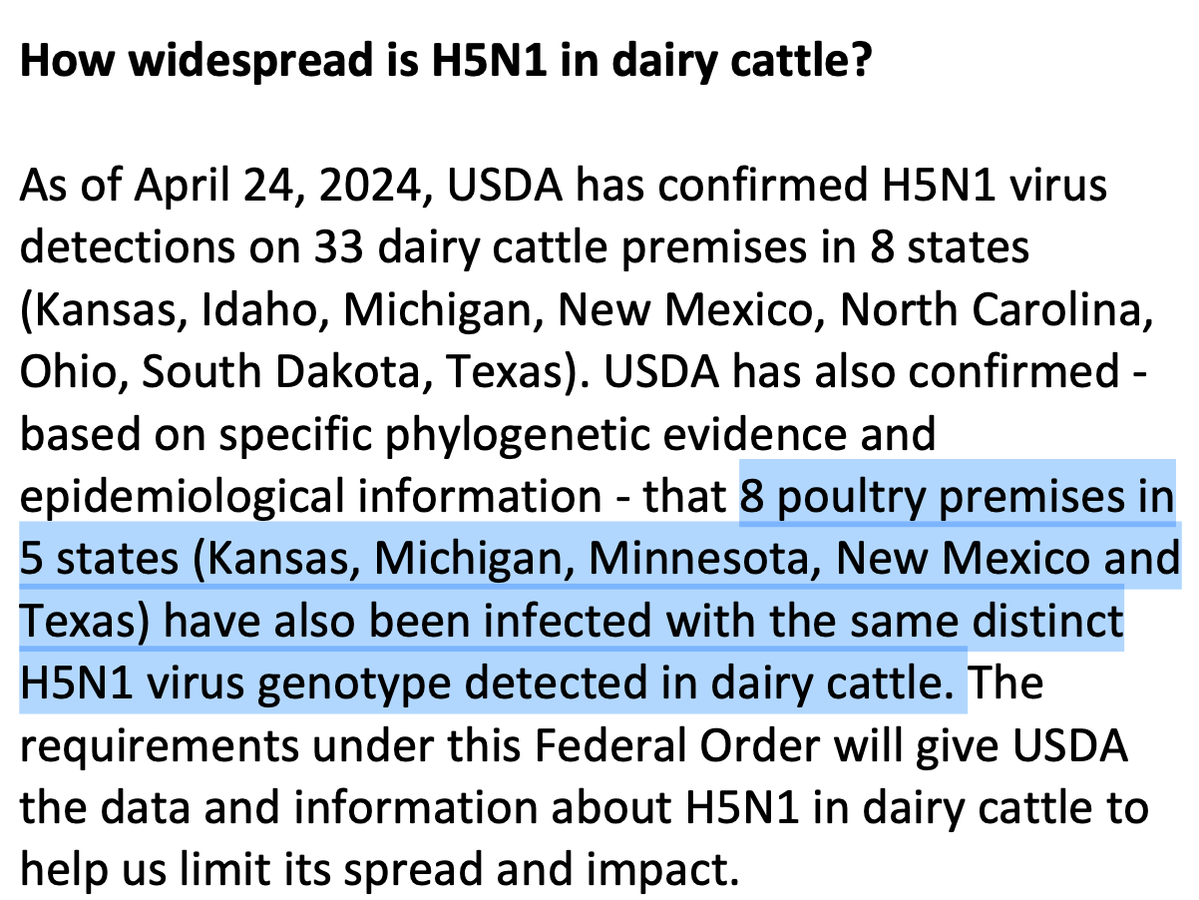1. Short #MPXV thread, based on data from @WHO_Europe & @ECDC:
The Euro #monkeypox outbreak continues to grow. Of +5200 cases reported here, 29 were women — which seems to be an increase. 15 health workers among cases; not clear if exposure was on the job.
monkeypoxreport.ecdc.europa.eu
The Euro #monkeypox outbreak continues to grow. Of +5200 cases reported here, 29 were women — which seems to be an increase. 15 health workers among cases; not clear if exposure was on the job.
monkeypoxreport.ecdc.europa.eu

2. This may not be new-new, but I haven't noticed this previously: @WHO has pushed back the date on its case definition for suspected #monkeypox cases. They'd previously said March 15; now saying since Jan. 1. Suggests they believe the outbreak started earlier. 

3. These regular #monkeypox updates from @WHO_Europe & @ECDC_EU contain really useful information, like this breakdown of symptomology among cases. 

4. I don't know what to make of the #monkeypox epicurve in the report, however. It's based on date of notification, not symptom onset. Don't think one can read into this a decline in transmission; expert opinion welcomed. 

5. Adding to this #MPXV 🧵 with material from a new @WHO update.
WHO says to date there doesn't appear to be sustained transmission outside networks of men who have sex with men.
cdn.who.int/media/docs/def…
WHO says to date there doesn't appear to be sustained transmission outside networks of men who have sex with men.
cdn.who.int/media/docs/def…

6. @WHO reports #MPXV cases globally; it no longer reports on the outbreak outside of endemic countries as a distinct entity.
It reports that as of July 4, 6027 confirmed cases of #monkeypox were reported this year; 3 of those people died.
It reports that as of July 4, 6027 confirmed cases of #monkeypox were reported this year; 3 of those people died.

7. The 3 #monkeypox deaths @WHO reports were in endemic countries: Nigeria (1) & Central African Republic (2).
The global deaths in 2022 are actually higher: the latest epi report from Nigeria lists 3 deaths as of July 3. ncdc.gov.ng/diseases/sitre…
The global deaths in 2022 are actually higher: the latest epi report from Nigeria lists 3 deaths as of July 3. ncdc.gov.ng/diseases/sitre…

8. The preponderance of #monkeypox infections globally this year have been in men; you can barely spot the female cases in this graph, which is based on data from 4397 of 6207 confirmed cases. 

9. @WHO reports that to date 25 health workers have been among this year's #monkeypox cases. It's not clear if they were infected at work, though occupational exposure cannot be ruled out in at least some cases. 

• • •
Missing some Tweet in this thread? You can try to
force a refresh



















